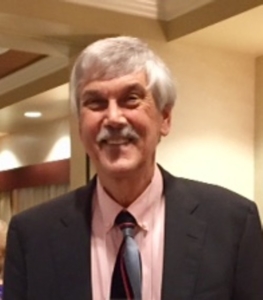The Intimate Kinship of Genres

David Radavich
During this period of hyper-consciousness about genres and subgenres, bookstores, Amazon, and agents encourage us to think of “boxes” into which our writing can be put for purposes of marketing. Not surprisingly, we pay close attention to relatively small distinctions between intersecting forms of literature. What makes for a young adult novel—a teenage protagonist? How do we place a prose poem, or the lyrics to a song?
But the classic genres—poetry, drama, fiction, non-fiction—in fact bleed into each other relentlessly. In fact, I would argue that they not only borrow ruthlessly from each other but also contain each other. These genres all belong to the same family, the art of literature, and their differences are more due to mind-set and arena than to fundamental distinctions.
Take drama, for instance. It can be written in poetry or prose, but there is always a story. And that story bears a striking resemblance to most fiction, apart from the mechanics of enactment on stage. And as master analyst of theatre Sam Smiley has pointed out, even the most prose-driven plays ascend to poetry at the climax: Arthur Miller’s Death of a Salesman moves into a new lyric dimension near the end.
Fiction, of course, contains the central elements of drama—plot, characterization, setting, thought, and conflict—even as it occurs on the page and in readers’ minds rather than under the proscenium arch. Like drama, fiction also incorporates a good deal of non-fictional elements, the classic instance being Moby Dick’s disquisitions on whales. But novels also include elements central to poetry—imagery, metaphor, rhythm, refrain—on a regular basis, to heighten awareness and increase impact.
Poetry is thought to be the “quiet,” interior genre most intimately tied to music. But many poems tell stories of various lengths, even in particular stanzas, while narrative verse is commonly written and read. Every poem enacts tension between the speaker, the subject, onlookers, and the reader in an elaborate linguistic and semantic dance. Poems include perpetrators, spectators, conflicts, and most build to a climax as mini-dramas of thought and emotion. Shakespeare’s sonnets include the speaker, the beloved (male and female), friends, the rival poet, each by turn scorned, castigated, pled with, or embraced. Lots of drama!
Incorporating narrative, drama, and at its best poetry, non-fiction hovers throughout as our basic source of information about weather, geography, flora, history, religion, and politics. In thinking about writing, it might help us to become more aware of the sibling genres to the one have chosen so that we can enrich and magnify our impact. Sacrifice and renewal, love and alienation, oppression and justice—deep human struggles appear in all genres, wearing our many faces of experience.
LEARN WITH DAVID: David Radavich leads “Dramatizing Your Poetry,” which considers the oft-ignored theatrical elements in poetry and examines a range of poems that demonstrate both the loud and the quiet conflicts inherent in poems. Thursday, October 22, 6-7:30 p.m. More info
ABOUT DAVID: David Radavich is a poet, playwright, and essayist who has published companion epic narratives, America Bound (2007) and America Abroad (2019), along with six lyric collections, most recently Middle-East Mezze (2011) and The Countries We Live In (2014). If the pandemic passes, Cervena Barva Press will publish his new book, Here’s Plenty. Radavich’s more than 25 plays have been performed across the U.S., including six Off-Off-Broadway, and in Europe. He has served as president of the Thomas Wolfe Society, Charlotte Writers’ Club, and North Carolina Poetry Society, and currently administers the Gilbert-Chappell Distinguished Poet Series.
